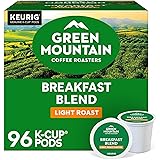Mastering Your Home Coffee Brew: Essential Principles for a Better Cup
Did you know that over 98% of your daily filter coffee is water? This surprising statistic highlights a crucial truth. The quality of your water drastically impacts your coffee’s taste. The video above offers a fantastic introduction to the basic principles of coffee brewing. It underscores how understanding fundamental concepts can elevate any home brewing method. This guide expands on those insights. We explore each variable in depth. You will gain control over your daily brew.
The Foundation of Flavor: Water Quality Matters
Your coffee’s flavor journey begins with water. Cafes invest heavily in advanced filtration systems. However, you don’t need commercial setups at home. A good bottled water filter is often sufficient. Tap water contains various minerals and chemicals. These elements can negatively affect taste. They often introduce off-flavors or prevent proper extraction.
Imagine if your water tasted metallic. This undesirable flavor would transfer directly to your coffee. Similarly, excessively hard water struggles to extract flavors efficiently. Softened or filtered water allows coffee’s natural notes to shine. It creates a cleaner, more vibrant cup.
Achieving the Balanced Brew: Your Ultimate Goal
Every coffee brewing basics guide aims for a balanced cup. This means avoiding extremes. You don’t want coffee that is too bitter, sour, or weak. Instead, seek a harmonious blend. Look for pleasant sweetness and enjoyable flavors. Achieving this balance involves careful extraction. You can extract more or less from the coffee. This control is truly empowering.
The Core Variables of Perfect Coffee Extraction
Several factors influence how much flavor you extract. Each variable plays a distinct role. Learning to manipulate these variables is key. It allows you to tailor your coffee to perfection.
1. Water Temperature: The Solvent’s Power
Heat dramatically influences extraction. Hotter water acts as a more effective solvent. It dissolves coffee compounds faster. This means more flavor transfers to your cup. Most brewers aim for water between 195°F and 205°F (90°C to 96°C). This range is considered ideal.
Yet, going too hot can cause over-extraction. This leads to bitter, acrid flavors. Too cool water results in under-extraction. Your coffee will taste weak and sour. A temperature-controlled kettle is a great tool. It allows precise adjustments for optimal results. Experimentation helps you find your sweet spot.
2. Contact Time: The Duration of Interaction
The length of time coffee and water touch is critical. Longer contact generally leads to more extraction. This is particularly true for immersion brewers. Think French presses or Aeropresses. The grounds steep directly in water.
However, excessive contact time can also lead to over-extraction. This causes bitterness. Conversely, too little time results in under-extraction. Your coffee will lack depth. Finding the correct brewing time is essential. It contributes greatly to a balanced cup.
3. Turbulence: Stirring Up Flavor
Turbulence refers to the agitation of coffee grounds. Stirring or swirling the coffee creates turbulence. This ensures all grounds contact fresh water. It promotes even extraction. More turbulence means more efficient extraction.
In a French press, stirring the slurry is common. For pour-overs, a circular pour creates turbulence. Imagine if water only touched the top layer of grounds. You would get an uneven, weak brew. Active agitation ensures full flavor development. It’s a simple yet powerful technique.
4. Grind Size: The Key to Controlled Extraction
Grind size is perhaps the most impactful variable. It dictates how quickly water can extract flavors. Finer grinds offer more surface area. Water interacts with more coffee particles. This leads to faster extraction.
Conversely, coarser grinds have less surface area. Water passes through them more slowly. This results in slower extraction. Understanding this relationship is crucial. It allows you to tailor your grind to your brewing method.
Grind Size Examples for Common Home Brewing Methods:
-
French Press (Cafetière): Coarse Grind
This immersion method involves long contact times. A coarse grind prevents over-extraction. It should resemble coarse sea salt or demerara sugar. Imagine small, distinct particles. This allows for a clean, full-bodied brew. A finer grind would lead to bitterness and silt.
-
Pour-Over (e.g., V60, Chemex): Medium-Fine Grind
Gravity brewers rely on water passing through coffee. A medium-fine grind offers controlled flow. It looks like granulated sugar. This grind balances extraction time. It prevents clogging while drawing out complex flavors. Adjust finer or coarser based on your specific device and desired flow rate.
-
Aeropress: Medium-Fine to Fine Grind
The Aeropress is versatile. It can use a range from medium-fine to fine. A finer grind is suitable for shorter brew times. It allows for quick, robust extraction. Think a bit finer than table salt. Experimentation truly shines with this brewer.
-
Moka Pot: Fine Grind
Moka pots use pressurized steam. They require a fine grind. This grind is finer than pour-over coffee. It is coarser than espresso. It should resemble table salt. This fineness creates necessary resistance. It ensures proper pressure buildup and extraction.
-
Espresso: Very Fine Grind
Espresso machines use high pressure, short contact times. A very fine, powdery grind is essential. It should feel like flour. This extreme fineness creates intense resistance. It allows for rapid, concentrated extraction. Too coarse, and your shot runs too fast and tastes weak. Too fine, and it chokes the machine.
Grinding your coffee fresh is a game-changer. Whole beans retain their flavor compounds longer. Pre-ground coffee stales quickly. Investing in a burr grinder is highly recommended. It provides consistent particle size. This consistency is vital for even extraction. An inconsistent grind leads to uneven flavors. Some particles over-extract; others under-extract. This impacts the overall balance. Freshly ground coffee unlocks superior aromas and tastes. It makes a significant difference.
Bringing It All Together for Your Best Brew
Understanding these basic principles transforms home brewing. You move beyond simple recipes. You gain control over flavor outcomes. Adjusting even one variable can dramatically change your cup. This knowledge empowers you to troubleshoot. You can fine-tune any brewing method. Aim for that perfect, balanced cup of coffee every time.







